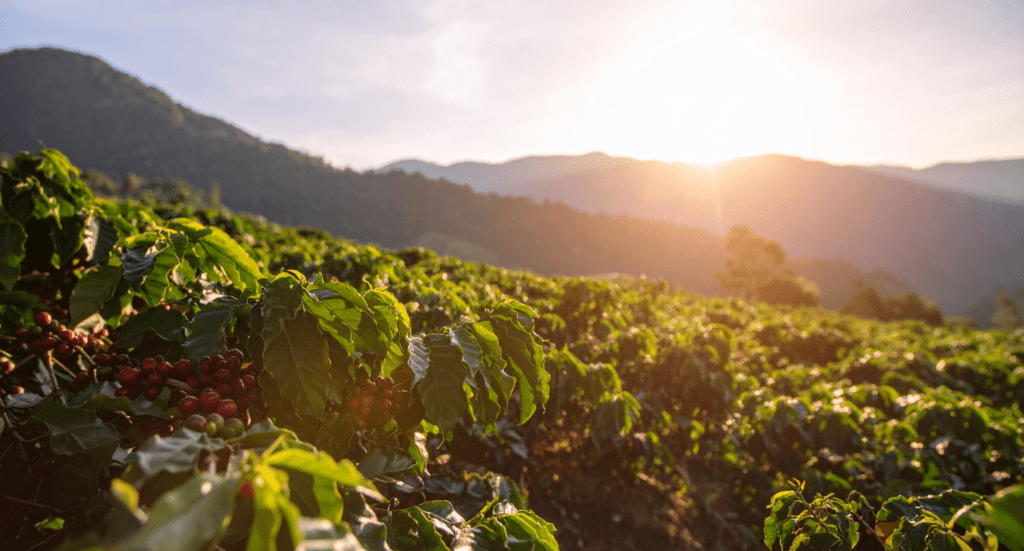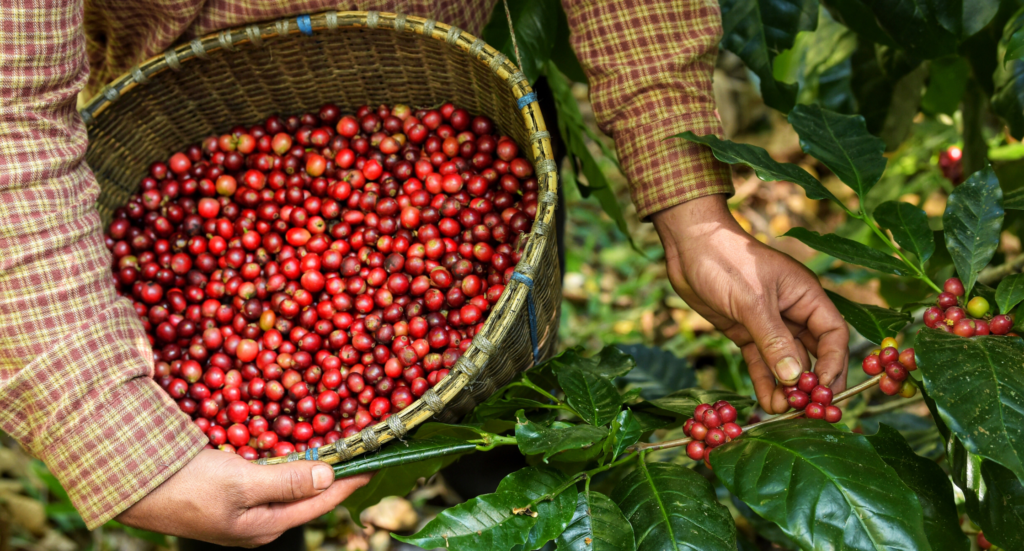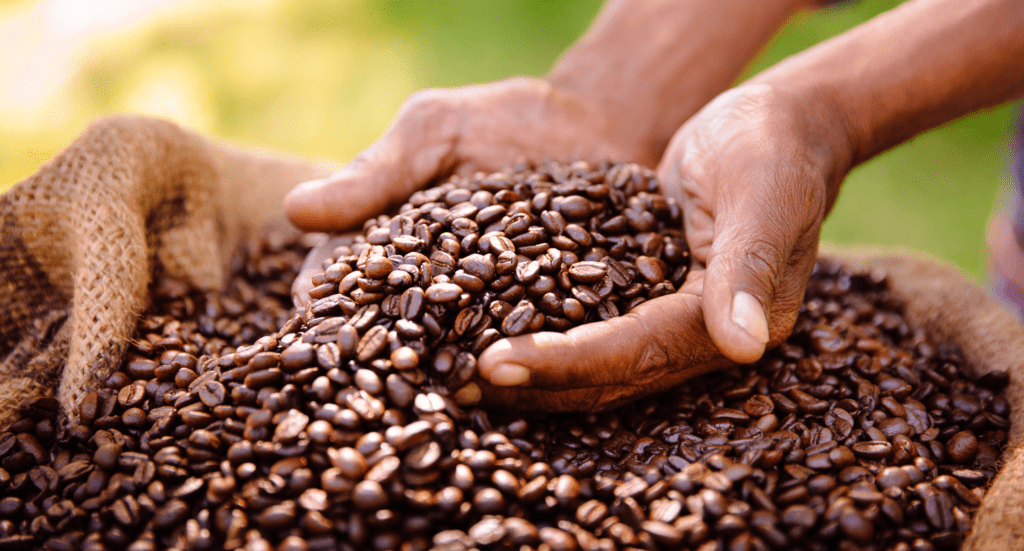Coffee Tourism in Costa Rica: What's Covered
Costa Rica’s volcanic soil creates distinctive coffee experiences accessible within hours of San José. Visit during harvest season (November-February) when plantations buzz with cherry-picking and processing mills run at capacity. Having your own vehicle lets you explore multiple farms across mountain roads where the best beans grow.
Quick Facts:
- Eight regions produce distinct flavors at 1,200-1,900 meters elevation
- Harvest season offers active demonstrations but requires advance booking
- Tours range from 2-hour tastings ($26) to multi-day farm stays
- Central Valley routes suit first-timers; Tarrazú needs mountain driving experience
- Cupping workshops teach you to identify chocolate, citrus, and stone fruit notes
Top 3 Experiences:
- Café Britt (Heredia) – Theatrical tour with roastery visits and tastings, 90 minutes
- Doka Estate (Poás) – Award-winning plantation with processing demos and eight-blend comparisons
- Tarrazú Multi-Farm Circuit – World-renowned beans requiring 2-3 days for thorough exploration
West Valley around Naranjo works well for families seeking cultural immersion alongside coffee education. For efficient vacation planning, book harvest season tours weeks ahead and ensure proper vehicle insurance for remote plantation roads.
If you need any help with a Costa Rica car rental, contact us now!
Costa Rica’s coffee reputation reaches far beyond your morning cup. The country’s volcanic soil, diverse microclimates, and generations of farming expertise have created some of the world’s most distinctive coffee experiences. From traditional family plantations tucked into mountain valleys to innovative processing facilities showcasing modern techniques, Costa Rica offers coffee tourism that goes deep into the culture and science behind every bean.
The beauty of Costa Rican coffee tourism lies in its accessibility. Unlike remote coffee regions in other countries, most of Costa Rica’s premier coffee areas sit within a few hours’ drive of San José, making day trips or multi-day coffee routes entirely feasible for travelers with limited time.
Understanding which regions offer what experiences—and when to visit them—transforms a simple plantation tour into an immersive journey through Costa Rica’s agricultural heritage and innovation.

Which Coffee Regions Are Actually Worth Your Time?
Costa Rica’s eight official coffee regions each produce distinctly different flavors based on elevation, rainfall, temperature, and soil composition. The country’s coffee classification system, one of the world’s most rigorous, ensures that beans from each region meet specific quality standards.
Where Should First-Timers Start Their Coffee Journey?
Three regions offer the best combination of exceptional coffee and tourist accessibility, making them ideal starting points for coffee exploration.
Central Valley (Valle Central) surrounds San José with numerous small to medium plantations. This region pioneered Costa Rica’s coffee industry in the 1800s and continues producing well-balanced cups with bright acidity. The proximity to the capital makes day trips effortless, though the coffee character tends toward consistency rather than dramatic flavor profiles.
West Valley (Valle Occidental) centers around towns like Naranjo, Palmares, and San Ramón. Higher elevations here (1,200-1,700 meters) create more complex flavor development, with coffees displaying chocolate and fruity notes. The region offers excellent plantation tours with stunning mountain scenery.
Tarrazú represents Costa Rica’s most famous coffee region, producing beans that consistently rank among the world’s finest. Located south of San José around San Marcos de Tarrazú, this area’s high altitude (1,200-1,900 meters) and volcanic soil create coffees with exceptional body and acidity.

When’s the Best Time to Visit Coffee Farms?
Coffee tourism in Costa Rica follows distinct seasonal patterns that dramatically affect both the experience quality and what you’ll observe during plantation visits.
Should You Visit During Harvest Season?
The coffee harvest, or “cosecha,” represents the most exciting time for coffee tourism (November-February). During these months, plantations buzz with activity as workers hand-pick ripe red cherries from mountainside trees. You’ll witness the complete process from picking through initial processing, often with opportunities to participate in harvesting activities.
Harvest season advantages:
- Active picking and processing to observe
- Fresh coffee tastings directly from current harvest
- Higher plantation staff availability for detailed explanations
- Cooler mountain temperatures for comfortable touring
- Clear weather for scenic mountain views
Planning considerations: Book tours well in advance during harvest season, as this period attracts serious coffee enthusiasts from around the world. Plantation accommodations fill quickly, and tour groups operate at capacity.
What About the Processing Season?
The processing season (December-March) overlaps with harvest but continues after picking concludes. This period offers exceptional insight into how different processing methods—washed, honey, natural—affect final cup characteristics. You’ll see wet mills in full operation, with beans at various stages of drying and preparation.
Processing highlights:
- Wet mill operations at peak activity
- Different processing method demonstrations
- Cupping sessions comparing processing styles
- Traditional drying patio observations
- Quality control procedures in action
Is The Growing Season Worth Visiting?
While harvest excitement has passed, the growing season (April-October) offers different coffee tourism advantages. Plants display lush green growth, white coffee blossoms appear (typically in April-May), and plantations focus on cultivation practices rather than harvesting pressure.
Growing season benefits:
- More relaxed touring pace with detailed plant explanations
- Coffee blossom viewing (April-May creates spectacular white flowering)
- Focus on sustainable farming practices and environmental stewardship
- Lower tourist numbers allowing for more personalized experiences
- Green season landscapes at their most vibrant

What Types of Coffee Experiences Can You Actually Do?
Costa Rica’s coffee tourism has evolved far beyond basic plantation walks, now offering experiences for every interest level and time commitment.
Are Basic Plantation Tours Worth It?
Most coffee farms offer guided tours (2-4 hours) explaining the cultivation process from seedling to finished product. These experiences typically include walking through coffee fields, observing processing facilities, and concluding with cupping sessions where you taste different bean preparations.
What to expect: Professional guides explain plant varieties, growing conditions, and harvesting techniques. Tours usually cover wet processing methods, drying procedures, and roasting basics. Most conclude with tastings comparing different processing styles or bean varieties.
Best for: First-time coffee tourists, families, or travelers with limited time seeking comprehensive overviews.
What’s a Cupping Workshop Really Like?
Focused entirely on developing palate appreciation, these workshops (1-2 hours) teach proper cupping techniques used by professional coffee tasters. You’ll learn to identify flavor notes, assess acidity levels, and understand how processing methods influence taste characteristics.
Workshop components:
- Professional cupping setup with multiple coffee samples
- Instruction on proper tasting techniques and terminology
- Comparison of different Costa Rican regions and processing methods
- Take-home tasting notes and flavor wheel references
Best for: Coffee enthusiasts wanting to develop tasting skills, travelers short on time, rainy day alternatives.
Can You Really Stay on a Coffee Farm?
Several coffee farms offer overnight accommodations (1-3 days), allowing deep immersion into plantation life. These experiences often include participating in daily farming activities, meals featuring farm-grown produce, and extensive time with farming families sharing traditional knowledge.
Immersive activities:
- Hands-on participation in farming tasks
- Traditional meal preparation using farm ingredients
- Evening conversations with multi-generational farming families
- Sunrise/sunset viewing from plantation vantage points
- Optional horseback riding through coffee fields
Best for: Travelers seeking authentic cultural experiences, those with flexible schedules, adventure-minded visitors.

How Do You Plan an Efficient Coffee Route?
Creating an efficient coffee tourism itinerary requires understanding regional geography and plantation accessibility. Most successful coffee routes focus on one or two regions rather than attempting to cover all areas.
What’s the Easiest Coffee Circuit from San José?
The Central Valley offers the most convenient coffee experiences for travelers based in San José or nearby areas. Multiple plantations operate within an hour’s drive, allowing visits to several farms in a single day or relaxed multi-day exploration.
Recommended route:
- Morning: Depart San José toward Heredia province
- Stop 1: Visit traditional plantation near Barva for processing tour
- Lunch: Coffee-focused restaurant in Heredia or Alajuela
- Stop 2: Afternoon cupping workshop at specialty roastery
- Optional: Evening return to San José or overnight in mountain lodge
Vehicle requirements: Standard rental cars handle Central Valley coffee routes easily. Most plantations maintain paved access roads, though some smaller farms require short walks from parking areas.
Is the West Valley Worth the Extra Drive?
The West Valley circuit (2-3 days) combines exceptional coffee with mountain scenery and small-town exploration. This route works well for travelers seeking both coffee education and cultural immersion in traditional Costa Rican communities.
Suggested itinerary:
- Day 1: San José to Naranjo area, plantation tour and overnight
- Day 2: Morning processing workshop, afternoon exploration of Palmares or Grecia
- Day 3: Farm stay experience or return via scenic mountain route
Driving considerations: West Valley routes include mountain driving with curves and elevation changes. Roads remain paved but require attention during green season when afternoon rains create slippery conditions.
Why Do Serious Coffee Lovers Drive to Tarrazú?
Tarrazú (2-4 days) demands more commitment but rewards serious coffee enthusiasts with access to world-renowned plantations and dramatic mountain landscapes. This region produces Costa Rica’s most celebrated coffees and offers the most technical and educational experiences.
Advanced itinerary:
- Day 1: Early departure to San Marcos de Tarrazú, plantation tour
- Day 2: Multiple farm visits with cupping comparisons
- Day 3: Processing method workshops and roasting practice
- Optional Day 4: Farm stay or return via alternative scenic route
Route planning: Tarrazú requires reliable transportation with good mountain performance. The region’s winding roads and elevation changes (up to 1,900 meters) demand vehicles with adequate power and braking capability.

How Do You Actually Taste Coffee Like a Pro?
Learning proper coffee tasting techniques enhances every plantation visit and transforms casual sampling into educational experiences. Costa Rican coffee professionals use standardized cupping procedures that anyone can learn.
What’s the Right Way to Cup Coffee?
Professional cupping follows specific steps designed to evaluate coffee characteristics consistently. The process might seem formal initially, but understanding these techniques helps you appreciate subtle differences between regions and processing methods.
Cupping steps:
- Dry fragrance assessment: Smell ground coffee before adding water
- Wet aroma evaluation: Inhale steaming coffee immediately after adding hot water
- Breaking the crust: Stir surface layer after 4 minutes of steeping
- Slurping technique: Draw coffee across your palate to distribute flavors
- Flavor identification: Note body, acidity, sweetness, and finish characteristics
What Flavors Should You Look for in Different Regions?
Different Costa Rican regions produce recognizable flavor characteristics that become apparent with practice. Learning these regional signatures helps you appreciate how geography affects taste.
Central Valley: Balanced acidity with citrus notes, medium body, clean finish. Often described as “approachable” with chocolate undertones.
West Valley: More complex than Central Valley, with stone fruit and chocolate notes. Higher acidity with wine-like characteristics.
Tarrazú: Full body with exceptional acidity balance. Classic descriptions include “bright” and “vibrant” with citrus and chocolate complexity.
Tres Ríos: Known for wine-like qualities with floral notes. Complex acidity with fruit-forward characteristics.
How Does Processing Change the Flavor?
Understanding how different processing methods affect taste helps you appreciate the technical skill involved in coffee production and guides your preferences during tastings.
Washed process: Creates clean, bright flavors highlighting bean’s inherent characteristics. Most common in Costa Rica and produces consistent quality.
Honey process: Leaves some fruit mucilage during drying, creating sweetness and body. Results vary from white honey (minimal fruit) to black honey (maximum fruit retention).
Natural process: Whole cherries dry before removing fruit, creating fruity, wine-like flavors. Less common in Costa Rica but increasingly popular for specialty lots.

How Do You Support Sustainable Coffee Farms?
Costa Rica’s coffee industry increasingly emphasizes sustainability and social responsibility. Understanding these initiatives helps you choose experiences that support local communities and environmental conservation.
What Do Those Certifications Actually Mean?
Multiple certification programs operate in Costa Rica’s coffee industry, each with specific standards for environmental protection and worker welfare. Learning these distinctions helps you identify farms committed to sustainable practices.
Rainforest Alliance: Focuses on ecosystem protection, wildlife conservation, and worker welfare. Farms must meet standards for soil conservation, water protection, and fair labor practices.
Fair Trade: Emphasizes fair prices for farmers and community development projects. Ensures minimum price guarantees and social premiums for community improvements.
Organic: Prohibits synthetic pesticides and fertilizers while requiring soil health maintenance. Often combined with other certifications for comprehensive sustainability.
Carbon Neutral: Costa Rica’s national goal includes carbon-neutral coffee production. Many farms implement reforestation and renewable energy to offset their carbon footprint.
Should You Choose Family Farms Over Big Operations?
Many of Costa Rica’s finest coffees come from small family farms that benefit directly from tourism revenue. Choosing these experiences over large commercial operations ensures your tourism spending supports local communities.
Cooperative benefits:
- Direct farmer support through tourism revenue
- Preservation of traditional farming knowledge
- Maintenance of family farming traditions
- Community investment in education and infrastructure
How to identify family operations: Look for farms offering overnight stays, meals with farming families, or tours led by farm owners rather than hired guides. These experiences typically provide more authentic insights into coffee farming life.
What Should You Bring to Coffee Tours?
Coffee plantation visits often involve outdoor walking and elevation changes. Proper preparation ensures comfortable experiences regardless of weather conditions.
Essential items:
- Comfortable walking shoes with good traction (plantation paths can be uneven)
- Light jacket or sweater (mountain elevations cool significantly)
- Rain protection (brief showers possible year-round at elevation)
- Sun protection (UV exposure increases with altitude)
- Water bottle (mountain air and walking increase dehydration)
- Small notebook for tasting notes and plantation information
When Should You Book Tours?
Advance reservations: Most quality coffee experiences require advance booking, especially during harvest season. Contact farms directly or through tour operators at least one week ahead, longer during peak season.
Tour timing: Morning tours often provide better coffee tasting conditions as palates remain fresh and plantation activities begin early. Afternoon tours work well for processing observations but may involve more challenging tasting conditions.
Group size: Smaller groups (4-8 people) generally receive more personalized attention and detailed explanations. Larger tour buses often limit interaction and question opportunities.

How Do You Get to These Coffee Farms?
Coffee regions require reliable transportation and careful route planning. Mountain roads, elevation changes, and rural locations demand proper vehicle selection and timing.
Vehicle recommendations: Most coffee plantations are accessible with standard rental cars during dry season. However, some farms require 4WD vehicles, especially during green season or for more remote locations. Higher ground clearance helps navigate unpaved plantation roads.
Route timing: Allow extra travel time for mountain driving and potential weather delays. GPS systems may not accurately reflect rural coffee farm locations, so confirm directions with plantation owners before departure.
Fuel planning: Fill gas tanks before entering coffee regions, as gas stations become scarce in rural mountain areas. Coffee tours often involve multiple stops, increasing fuel consumption beyond normal driving.
What Coffee Should You Actually Buy?
Most coffee plantations offer direct sales of their beans, often at prices significantly lower than international markets. Understanding what to look for and how to transport coffee ensures you bring home exceptional beans.
Which Beans Are Worth Bringing Home?
Single-origin beans: Purchase beans from specific farms or micro-lots rather than regional blends. These offer the most distinctive flavor profiles and direct support for individual farmers.
Processing variety: Buy small amounts of the same farm’s beans processed differently (washed vs. honey vs. natural) to understand processing impact on flavor.
Roast date consideration: Freshly roasted coffee tastes best within 2-4 weeks of roasting. Ask about roast dates and choose beans roasted recently rather than large quantities of older beans.
Whole bean preference: Whole beans maintain freshness much longer than pre-ground coffee. Most plantations offer grinding services, but whole beans travel better and stay fresh longer.
Where Do Locals Buy Their Coffee?
Don’t forget to stock up on coffee to take home! After tasting your way through plantations, you’ll want to keep those flavors going long after your vacation ends. Plus, Costa Rican coffee makes excellent gifts that your friends and family will actually appreciate.
Coffee is central to Costa Rican daily life — it’s part of every breakfast and pairs with bread or pastries in the afternoon. You’ll find bags of ground coffee in every supermarket at wallet-friendly prices.
Your reliable supermarket picks include:
- Café 1820 – The most common local brand
- Café Rey – Has a finer, more powdery grind
- Volio – Another solid everyday option
Watch out: Some super-cheap brands come pre-sweetened to mask their bitterness. Check the label before buying.
What About Specialty Coffee?
Look for packages labeled “export quality” or “shade grown” — these indicate the same high-grade beans Costa Rica sends worldwide. Shade-grown beans develop better flavors since coffee naturally thrives under tree coverage. For best results, always buy whole beans rather than pre-ground coffee.
Top picks for serious coffee lovers:
- Café Britt – Widely available, consistent quality
- Hacienda Doka – Estate-grown coffee from the Poás region producing award-winning beans, including their Peaberry with vanilla, caramel, and red berry flavors
- Café Don Cayito – Tarrazú-based family farm specializing in honey-processed and Geisha varieties. Three-time Cup of Excellence winner with exotic, floral notes
- Leyenda Coffee – High-altitude beans available in multiple flavors (Classic Dark, Vanilla, Irish Cream). 100% Arabica, kosher/gluten-free

Which Coffee Tours Are Actually Worth Your Time?
What Are the Can’t-Miss Coffee Experiences?
- Café Britt Coffee Tour (Heredia, near San José)
- Costa Rica’s first coffee tour, running since 1991 with ~50,000 annual visitors
- Combines theatrical storytelling with walks through coffee fields, roastery visits, and tasting sessions
- Options: Classic tour (~$26, 90 minutes) or extended “Coffee Lovers” tour with mill and organic plantation visit
- Doka Estate Coffee Tour (Poás Volcano area, Alajuela)
- 19 miles from San José at 4,000 ft elevation, producing award-winning Arabica since 1908
- Includes plantation walk, processing demo, roasting observation, butterfly gardens, and tastings of up to eight blends (including Peaberry)
- Often offers “Breakfast Blend” tour with meal and transport (2-3 hours total)
- Finca Rosa Blanca Organic Coffee Tour (Heredia highlands)
- Boutique eco-lodge with 30-acre organic farm using regenerative agriculture
- 2-hour guided walk through shade-grown fields and processing, ending with tasting
- Features Central Valley views and excellent birdwatching opportunities
- Monteverde/Coope Santa Elena Tour (Monteverde Cloud Forest)
- Visits cooperative member farms in cloud forest setting
- Covers planting, harvesting, sun-drying, forest conservation, and tasting (2-2.5 hours)
- Many farms use organic methods and fair trade principles
- Don Juan Coffee, Chocolate & Sugarcane Tour (Monteverde/Arenal)
- Three-in-one experience covering coffee, chocolate, and sugarcane
- Interactive activities may include sugarcane pressing and chocolate making
- Berry picking available during harvest season (Nov-Feb)
- About 2 hours, $47-50

When Should You Book These Tours?
Reserve in advance – Especially important for cooperative tours or boutique farms that limit group sizes.
Visit during harvest (Nov-Mar) – You’ll see cherry picking and actual processing rather than empty equipment.
Combine with nearby attractions – Link coffee tours with Poás Volcano visits, cloud forest exploration, or La Fortuna activities for efficient day trips.
Every coffee tour offers a unique journey from field to cup, flavored by Costa Rica’s tradition, terroir, and genuine hospitality. ¡Pura vida!

Ready to Explore Costa Rica’s Coffee Culture? Here’s Your Action Plan
Costa Rica’s coffee tourism offers experiences ranging from quick day trips to immersive multi-day adventures. Choose your approach based on your coffee interest level, available time, and desired depth of experience.
For Coffee Newcomers: Start with Central Valley day trips combining plantation tours with cupping workshops. This approach provides comprehensive introductions without requiring extensive travel or time commitments.
For Coffee Enthusiasts: Focus on single regions like Tarrazú or West Valley with multiple farm visits and processing workshops. Plan 2-3 days to allow thorough exploration and comparison opportunities.
For Serious Coffee Students: Design custom experiences combining multiple regions, harvest participation, and extended farm stays. These adventures require 4-7 days but provide unparalleled insight into Costa Rican coffee culture.
Transportation Planning: Consider renting a reliable car through Vamos Rent-A-Car for maximum flexibility in visiting multiple plantations and exploring rural coffee regions. Our GPS-equipped vehicles and local road condition updates help ensure safe mountain driving, while our comprehensive insurance coverage provides peace of mind when navigating remote plantation roads.
Plan your coffee route in advance, especially during harvest season when the best experiences book quickly. With proper planning and reliable transportation, Costa Rica’s coffee regions offer unforgettable journeys from bean to cup—all while supporting the families and communities that make exceptional coffee possible.
Ready to explore? Research your preferred coffee regions, contact plantations directly for tour availability, and prepare for an adventure that will forever change how you think about your morning cup.




